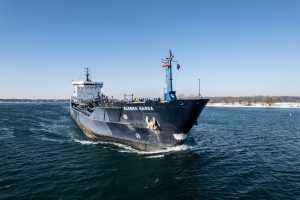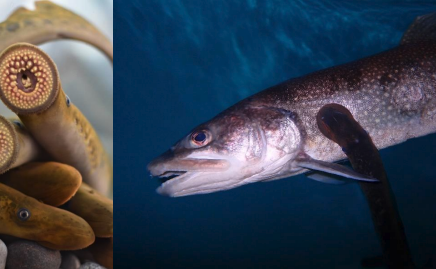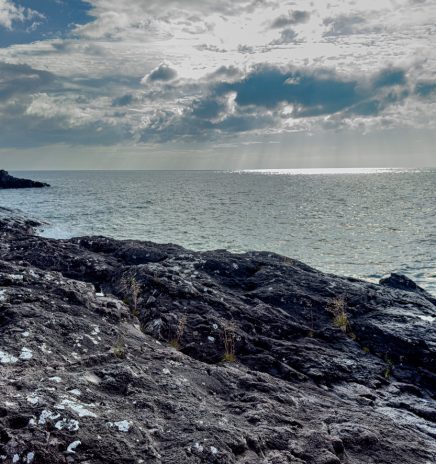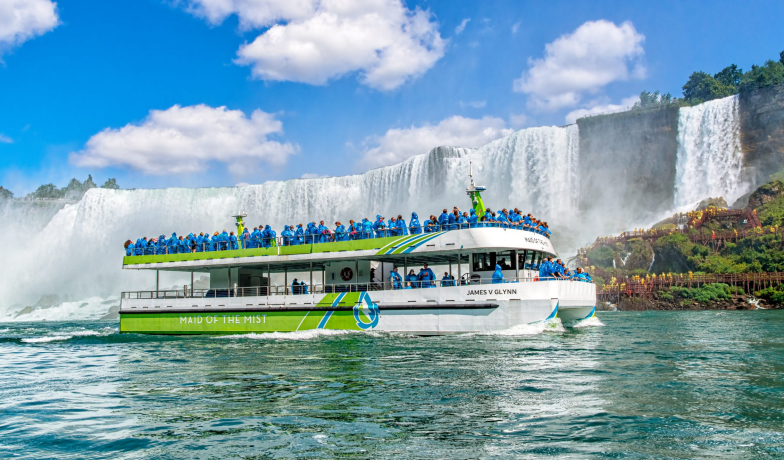Ferries Could Provide Early Lessons on Electrification
This is the newest in-depth study by the GSGP regarding alternative maritime fuels. In March, the organization released a study, sponsored by the U.S. Maritime Administration (MarAd), titled “Feasibility Study of Future Energy Options for Great Lakes Shipping.” In August 2023, the GSGP published “Great Lakes Commercial Vessels that Operate Like Ferries: A Potential Path to Electrification.”
The studies make clear that there are many opportunities for new electrical applications, particularly with ferries, viewed as a maritime transport sector most receptive to electrical power and its related, inherent restrictions. While the studies show the potential benefits of electrification, the path presents many challenges.
Ferries as Initial Models
The new ferry study was written by Elizabeth Ogard, principal with Prime Focus LLC, a consultancy, and Richard Stewart Ph.D., a maritime consultant with the University of Wisconsin. For many reasons, ferries are viewed as good first steps for electric power transition. A ferry’s route is usually relatively short, and back-and-forth. Limited distance means measured power. Additionally, most ferries have a predictable dwell time after each trip, a time that can allow for refueling or recharging. Electric ferries in Europe take advantage of this model now.
Across the Great Lakes, ferries provide many services. They are part of larger transit systems, connecting roadways and various points between the United States and Canada, as well as islands within the Great Lakes. Mackinac Island in Lake Huron, and Beaver Island in Lake Michigan are familiar examples. Great Lakes ferry service is frequently seasonal, partly because of harsh winters and ice and partly because ferry services are linked to tourist seasons. The authors noted technological advances for Great Lakes ferries, including advanced navigation systems, eco-friendly engines and amenities for comfort.
Ogard and Stewart’s study analyzed 127 Great Lakes ferries, evaluating criteria important to stakeholders, including ferry owners and operators, plus a project literature review. Stakeholder concerns included ferry ownership (public or private), the age of the ferry and demand for service. For projects, top concerns included essential service, state support and speed and route length.
Of the 127 ferries analyzed, six were identified as strong candidates for electrification.
- M/V Nichevo II – Bayfield and Madeline Island, Wisconsin
- M/V Huron – St. Ignace to Mackinac Island, Michigan
- M/V Charlevoix – Crossing South Arm of Lake Charlevoix to Ironton, Michigan
- M/V Anna May – St. Ignace to Mackinac Island, Michigan
- M/V Glenora – Glenora and Adolphustown, Ontario
- M/V Howe Islander – Mainland to Gillespie’s Point East End of Howe Island, Ontario
Since this was a high-level review, the authors recommended that stakeholders conduct the following initiatives to obtain more information.
- Develop a concept of operations document for the top six ferries to identify duty cycles, loads, schedules, maintenance windows and power needs and design a plan comparing net-zero emissions to a hybrid model. They highlighted a process developed by Quebec to assess ferry electrification.
- Host a workshop at Canadian or U.S. trade conferences to raise awareness, explore the operator’s perspective and assess project readiness.
- Prepare a Strategic Grant Funding Plan focusing on federal, state and private sector investments for repowering.
- Organize a trade mission to Europe to gain insights into hybrid and net-zero ecosystems.
- Develop a GSGP subgroup to promote multi-state/provincial partnerships and leverage federal grants.
- Collaborate with Mackinac Island Ferry Company and Michigan officials to electrify identified ferries, aligning with Michigan’s Healthy Climate Plan and EGLE Fuel Transformation Program.
- Advocate for Federal Transit Administration amendments to expand grant funding eligibility for shorter ferry routes.
- Advocate for National Electric Vehicle Infrastructure (NEVI) funding amendments to include 5-10 percent set aside for marine transportation projects, supporting essential ferry operators in electrification initiatives.
Ogard and Stewart’s study does not address some critical issues such as substation electric capacity or dock/terminal connection costs. Since electric vessel operations are new, and the field is constantly changing, the study acknowledged early adoption of new technology by vessel owners can be difficult and risky.
Cargo Vessel Lessons
The GSGP study released last summer took another perspective—whether there are freight-cargo operations that mimic ferries and, because of those attributes, whether some cargo vessels might be candidates for electrification.
The authors for that study were Jeremy Worm, Ph.D., associate director at APS LABS, Michigan Technological University and Sid Gopujkar, doctoral candidate at Michigan Technological University.
Their review included operations and travel for 103 Great Lakes cargo vessels. Ninety-five were judged unsuitable for electrification, mostly because of distances traveled.
Eight vessels were highlighted for further analysis.

- Huron (package freight vessel)
- Maple Grove (package freight vessel)
- Isle Royale Queen IV (package freight vessel)
- Ranger III (package freight vessel)
- J. S. St. John (bulk freight vessel)
- Sterling Energy (powered tanker)
- Algoma Hansa (powered tanker)
- Damia Desgagnés (powered tanker).
The Huron showed the most promise for electrification because it operated among three ports about 10 miles apart. The Isle Royale Queen IV and Ranger III appeared promising at first, but the authors noted those vessels would depend on electricity produced from diesel generators and ports in the Keweenaw Peninsula power grid that the authors wrote “is among the most carbon intense power grids in the United States.”
The study suggested all 103 vessels are potential candidates for partial electrification, where only the electricity needed for crew quarters of a vessel is powered using battery instead of fuel.
The new study by Worm and Gopujkar, recommends pilot projects to provide insights into the “practicality, performance and operational considerations of electrified cargo ships.” Additionally, they too suggest ferry electrification to help accelerate this body of knowledge.
Maid of the Mist
There are two electric vessels operating within the Great Lakes system – the James V. Glynn, named for the Maid of the Mist company chairman, and the Nikola Tesla, named for the 20th century electrical researcher and industrialist. They are owned and operated by the Maid of the Mist Corporation, a tour company operating at Niagara Falls.
The vessels are 90 feet long, catamaran-style with aluminum hulls, weighing 96 tons with a speed of 8 knots. Each can carry 600 passengers. They were placed in service in 2020. The vessels get power, at least indirectly, from the hydroelectric generating plant in Lewiston, New York. The vessels use approximately 38 kWh of power for each trip. Batteries are recharged each trip to 80 percent for optimum efficiency and battery life. With a C2 charge rate, each battery bank can be charged from 60 percent to 80 percent in seven minutes. In 2022, the Maid of the Mist vessels were charged 6,300 times and carried 1.2 million passengers. The previous vessels would have used more than 23,000 gallons of diesel fuel during the same time period.
John Sicinski, executive vice president at Maid of the Mist, said the e-vessels have proven to be excellent additions. He stated that electrical supply and related infrastructure are critical parts of an electrification project. “Moving that work through the regulatory pipeline can take time,” Sicinski said. “That process can take longer than building the boat.”
Fortunately, Maid of the Mist’s project was supported by nearby municipalities, as well as other factors that helped with timing and scheduling. Since the company’s older vessels were coming up for replacement, new investments were on the horizon. Also, the New York State Office of Parks, Recreation and Historic Preservation, which includes Niagara Falls, had a program to encourage alternative fuel investments. “We wanted to be a part of that,” Sicinski said. “We wanted to be good tenants.”
Customers like the vessels because they are quiet, easily maneuverable and no longer produce diesel exhaust. Sicinski said this is just the beginning for electrical maritime vessels. “The real focus for the next 10 years should be on intercity water taxis, tour boats and short run ferries,” he added. He suggested an initial focus on cities like Chicago and Boston, which have active inner-city tourism linked to river systems. He noted that Chicago, for example, has 80 vessels under 100 tons, commercial vessels that serve as tour boats, water taxis and dinner boats. “Those are really the primary candidates for this next step in electrification,” he said.

Sea Lamprey Control Initiative Enters Five-year Implementation Phase
The Supplemental Sea Lamprey Control Initiative (SUPCON) has entered a new, five-year implementation phase following several years of successful proof-of-concept research. Funded by the Great Lakes Fishery Commission, SUPCON expands... Read More

Alliance for the Great Lakes Addresses the Impact of Data Centers
The Alliance for the Great Lakes (AGL), a nonpartisan, nonprofit organization that works to protect, conserve and restore the Great Lakes, is investigating the impact of data centers and agricultural... Read More



